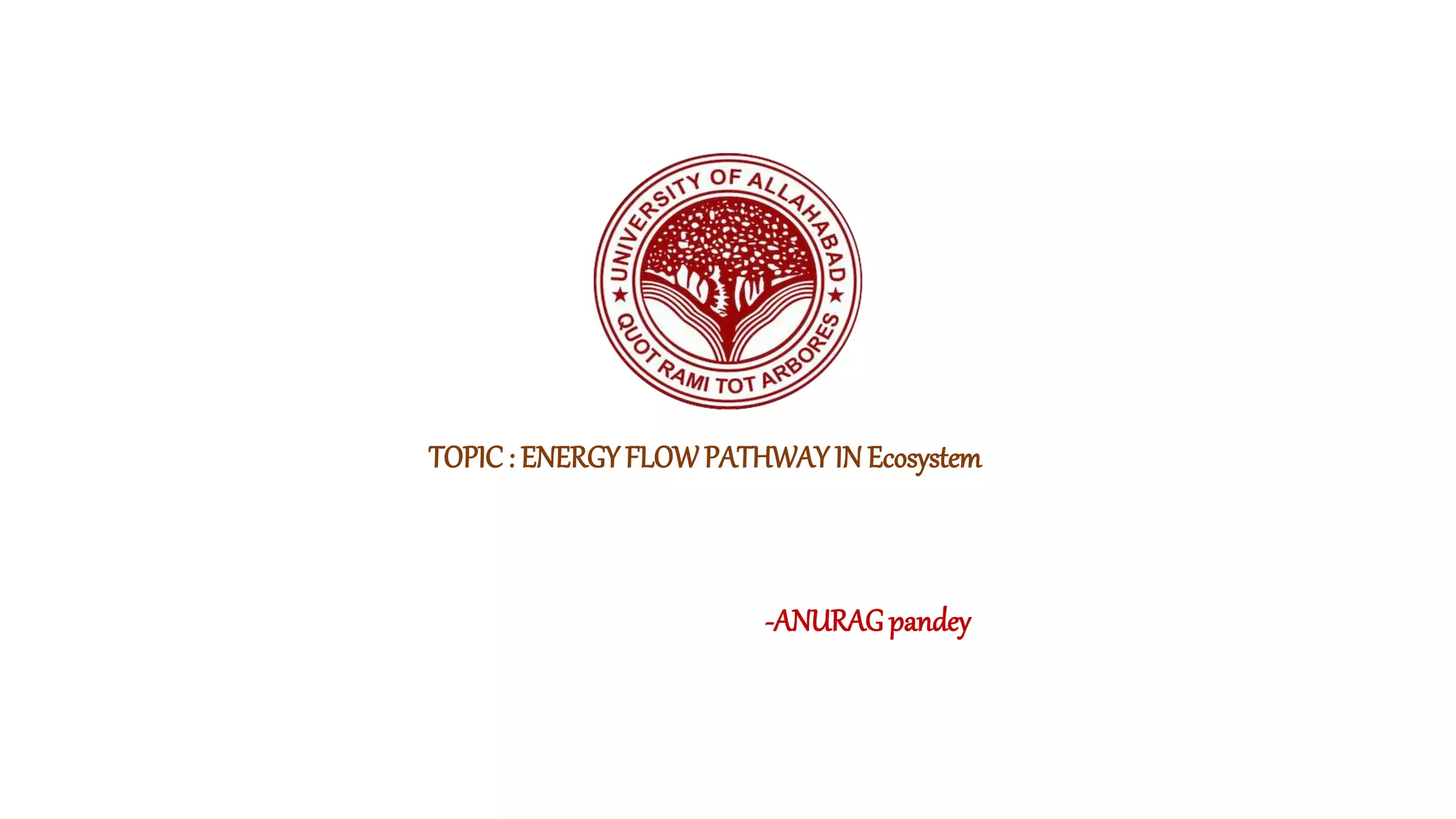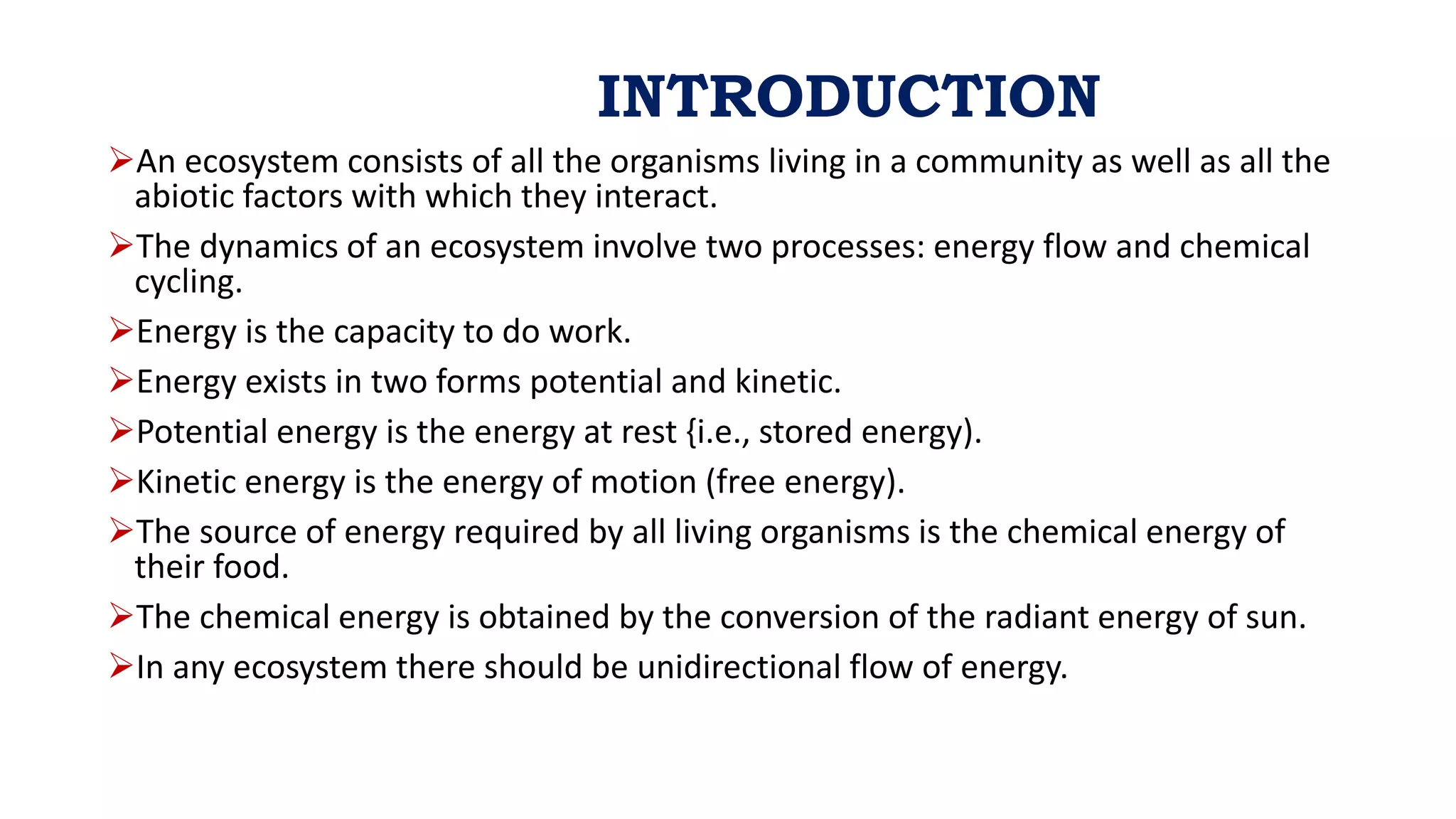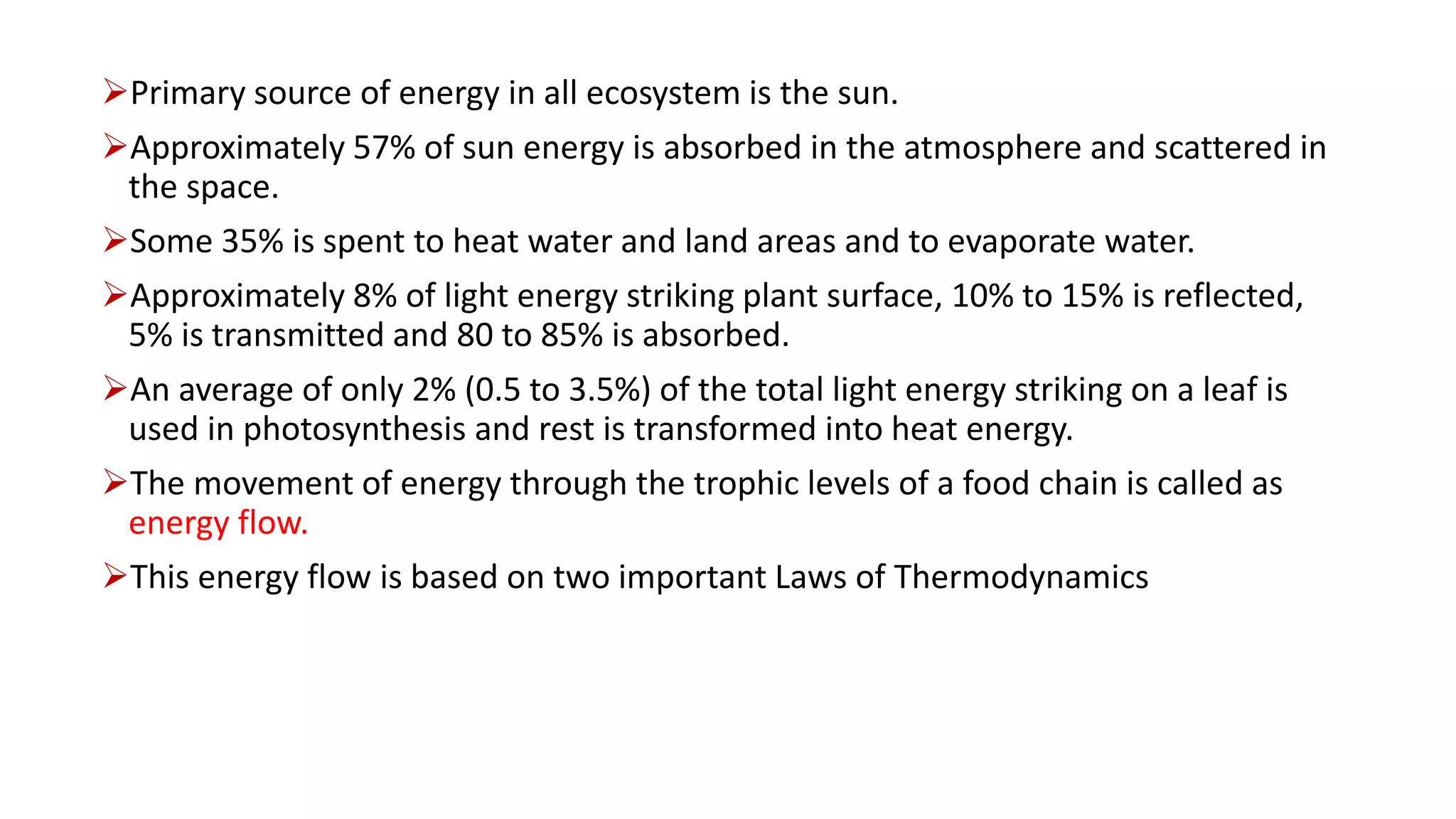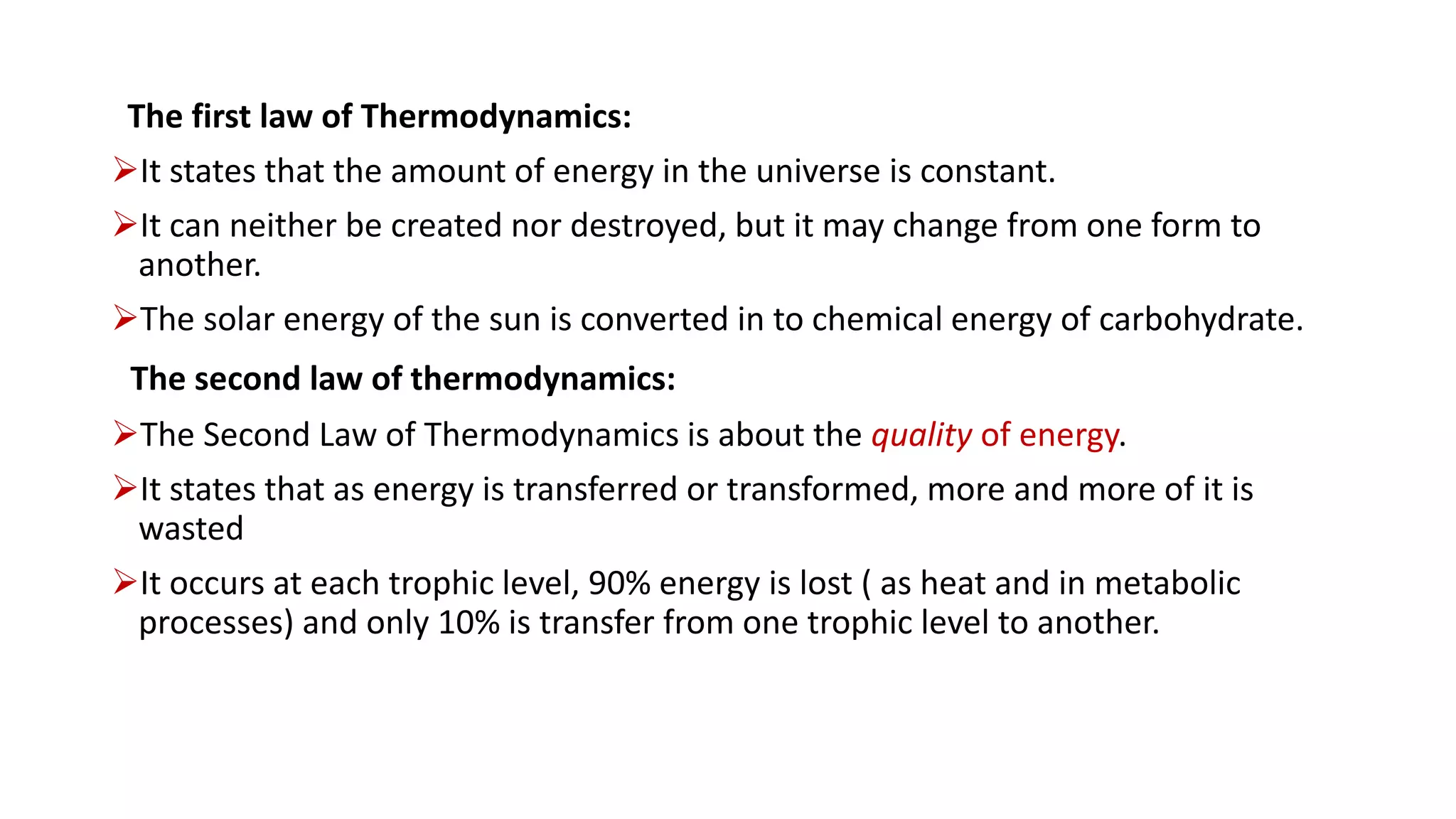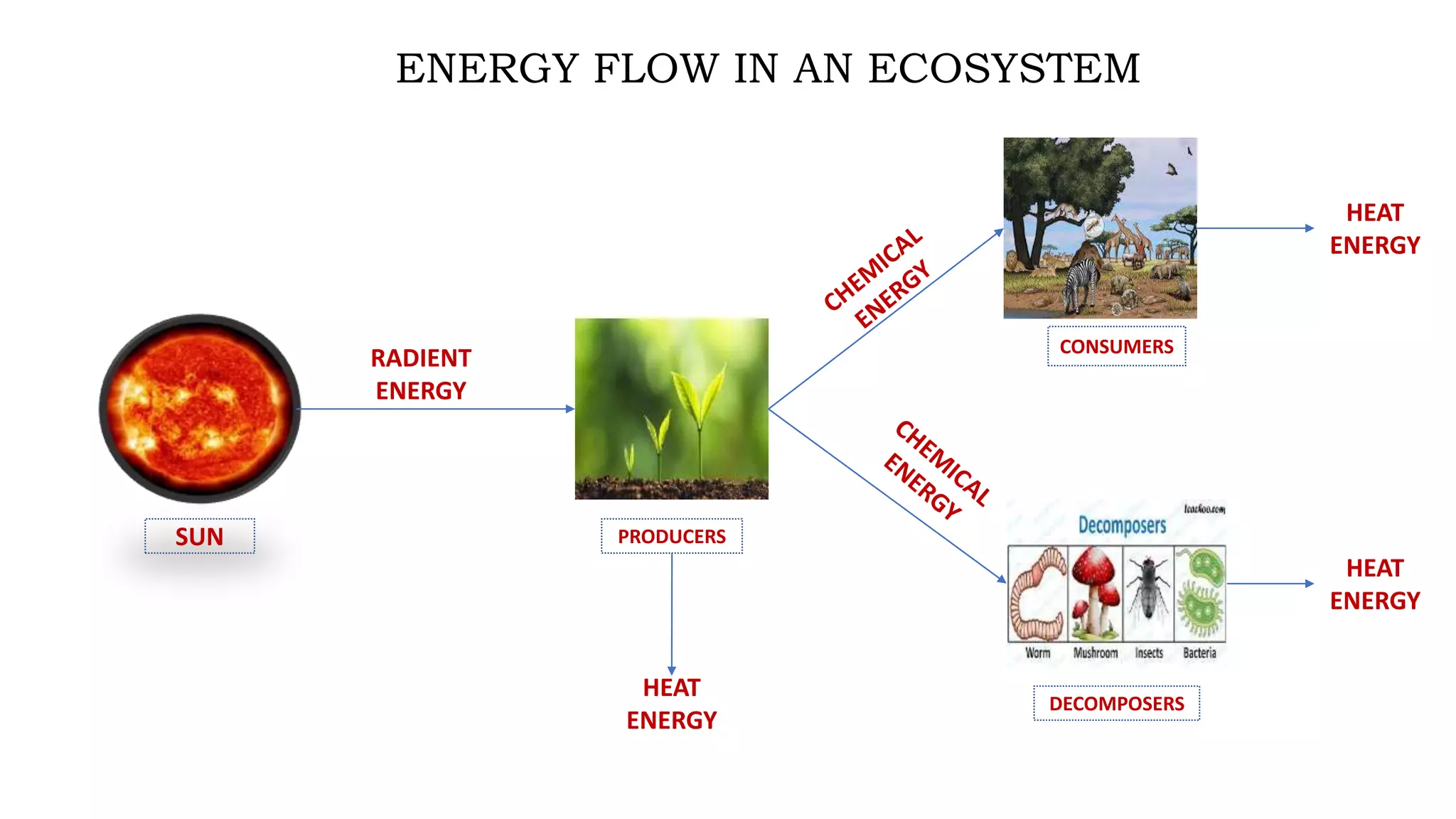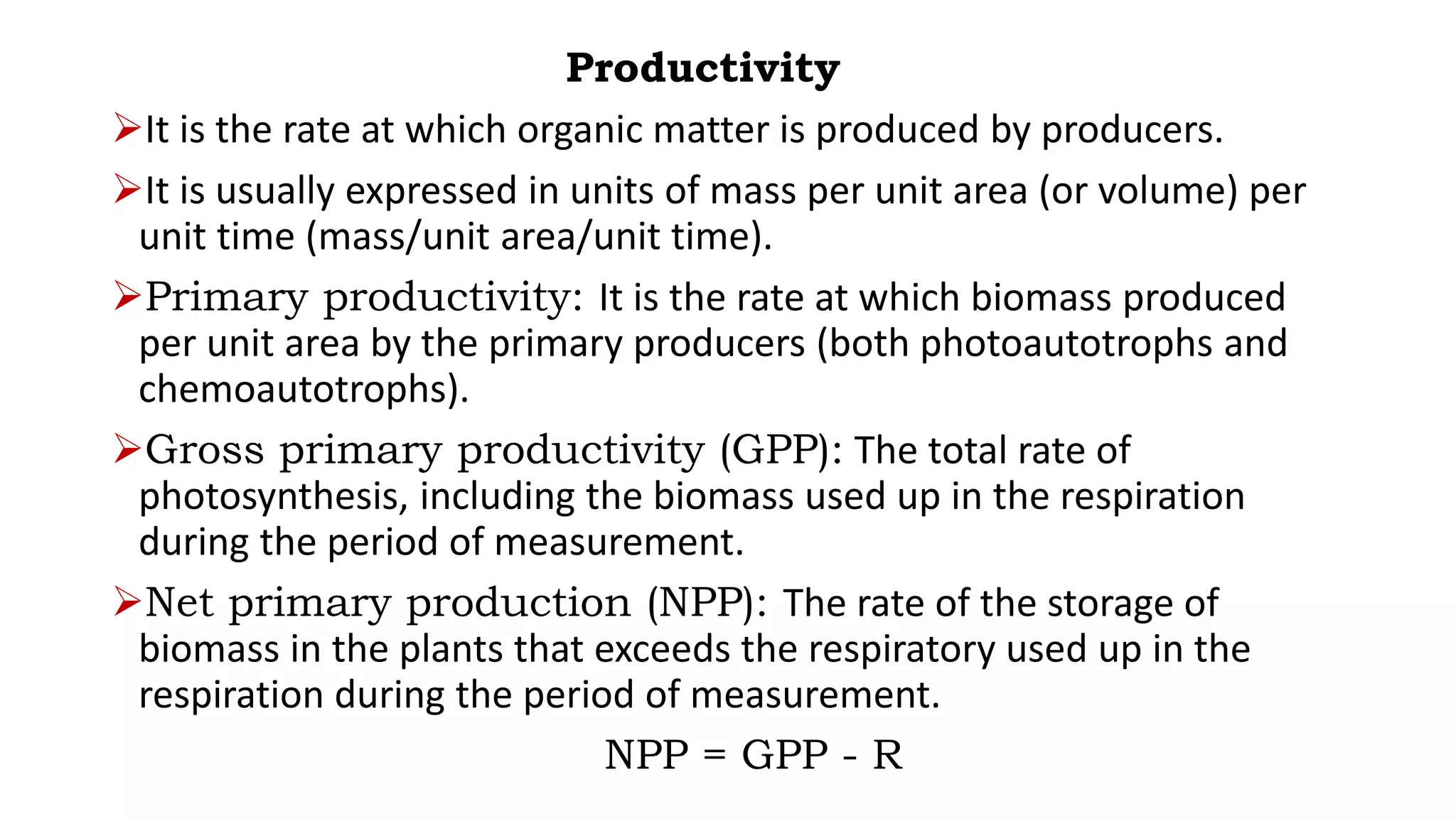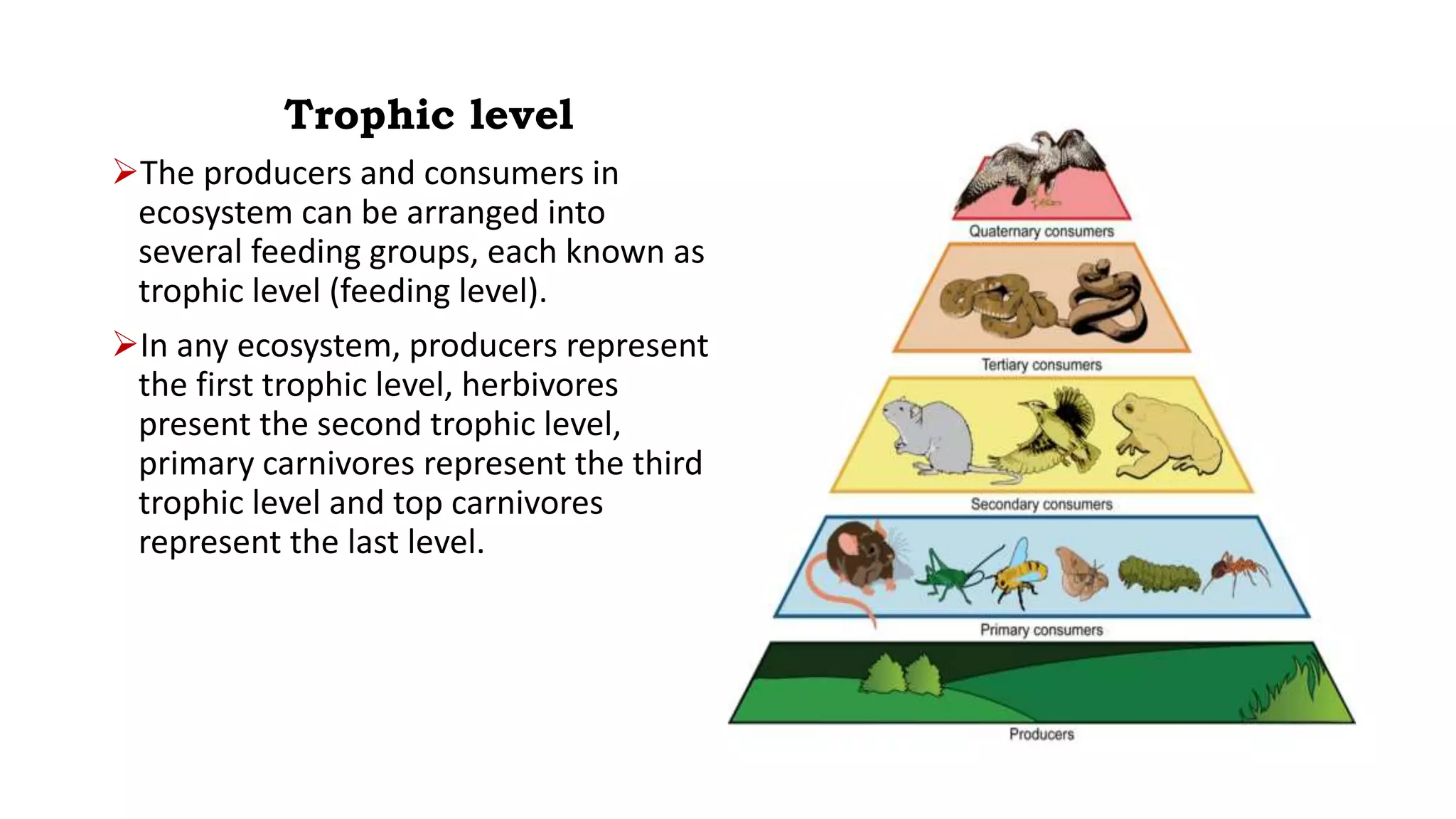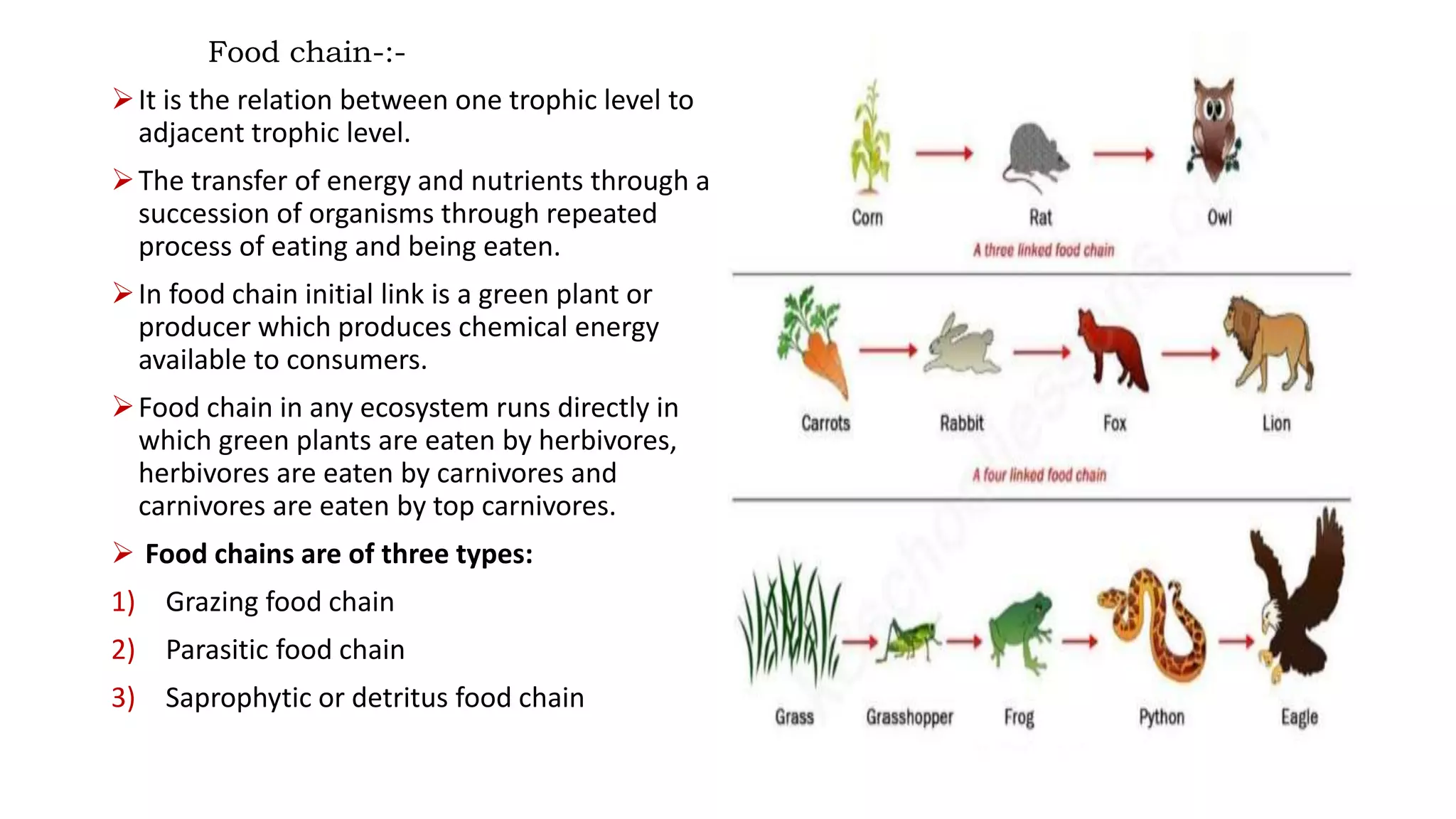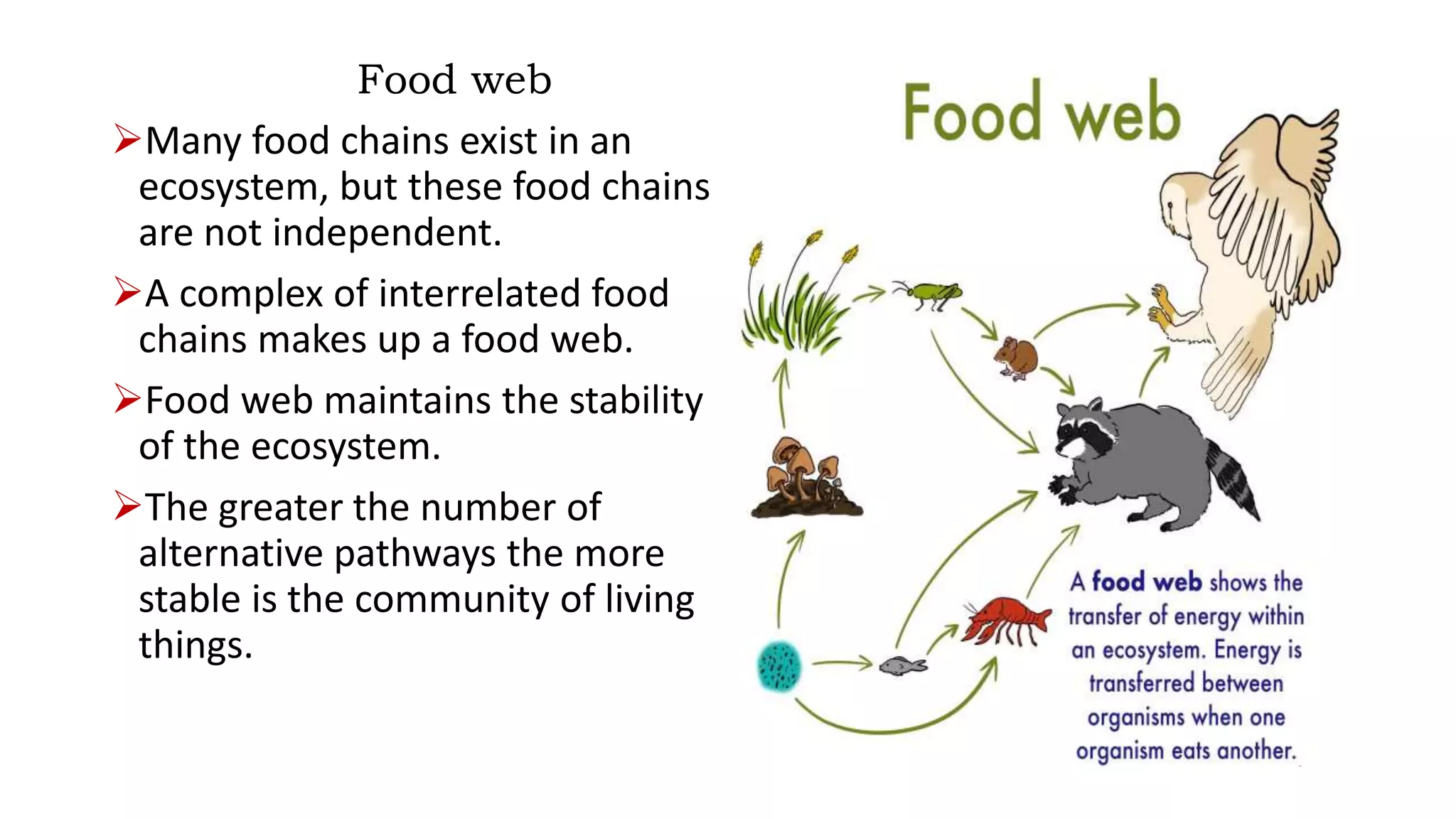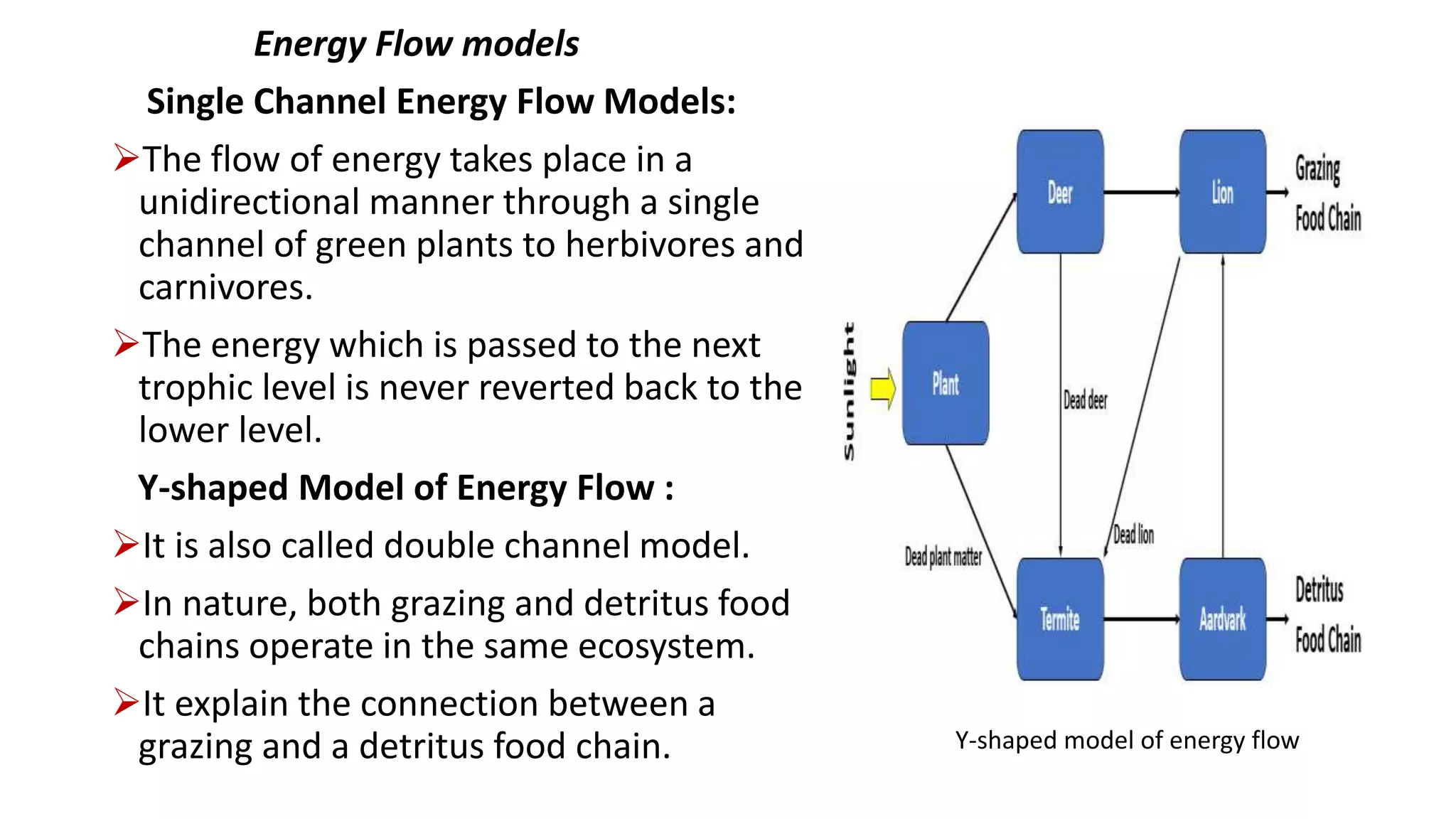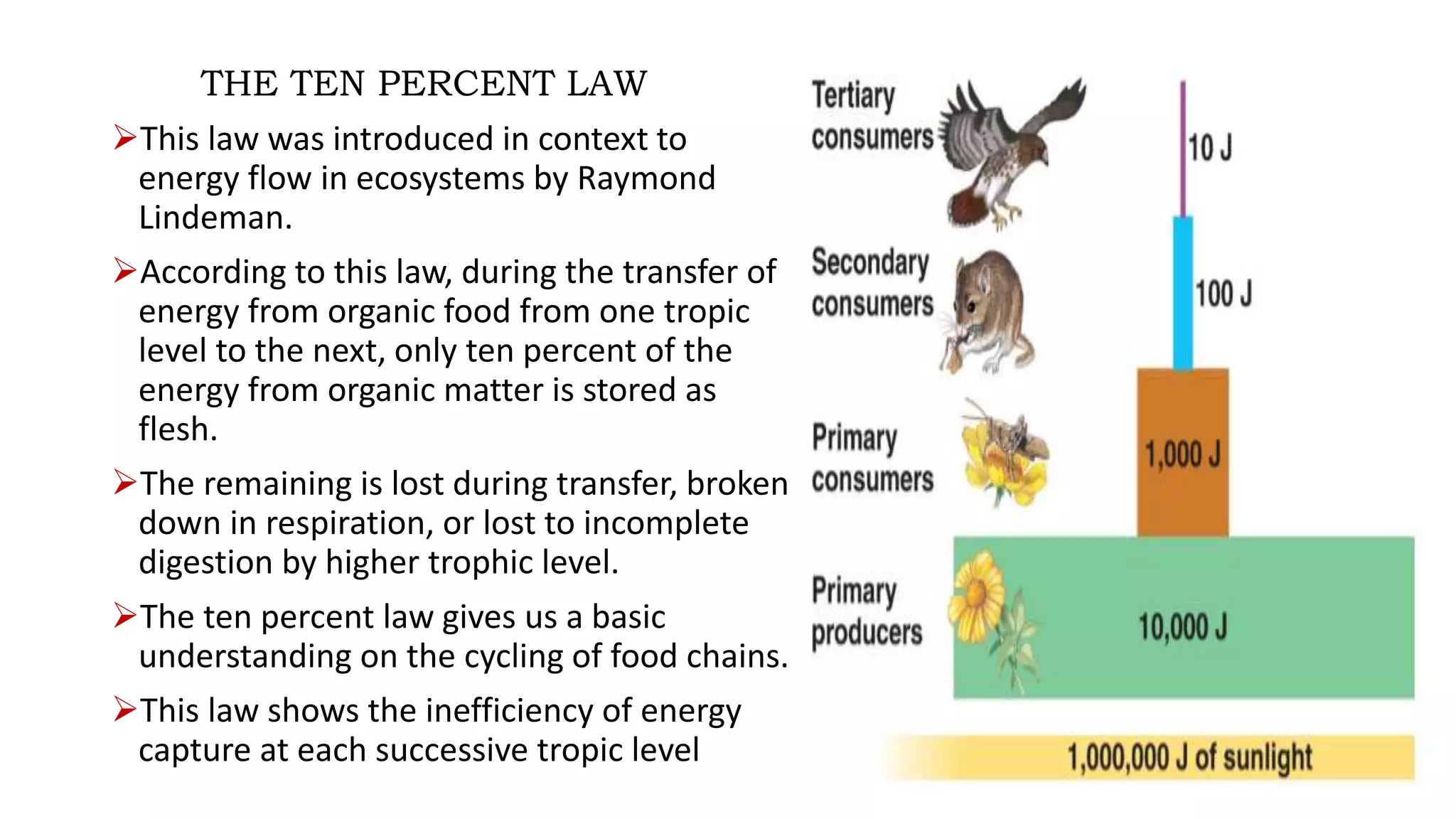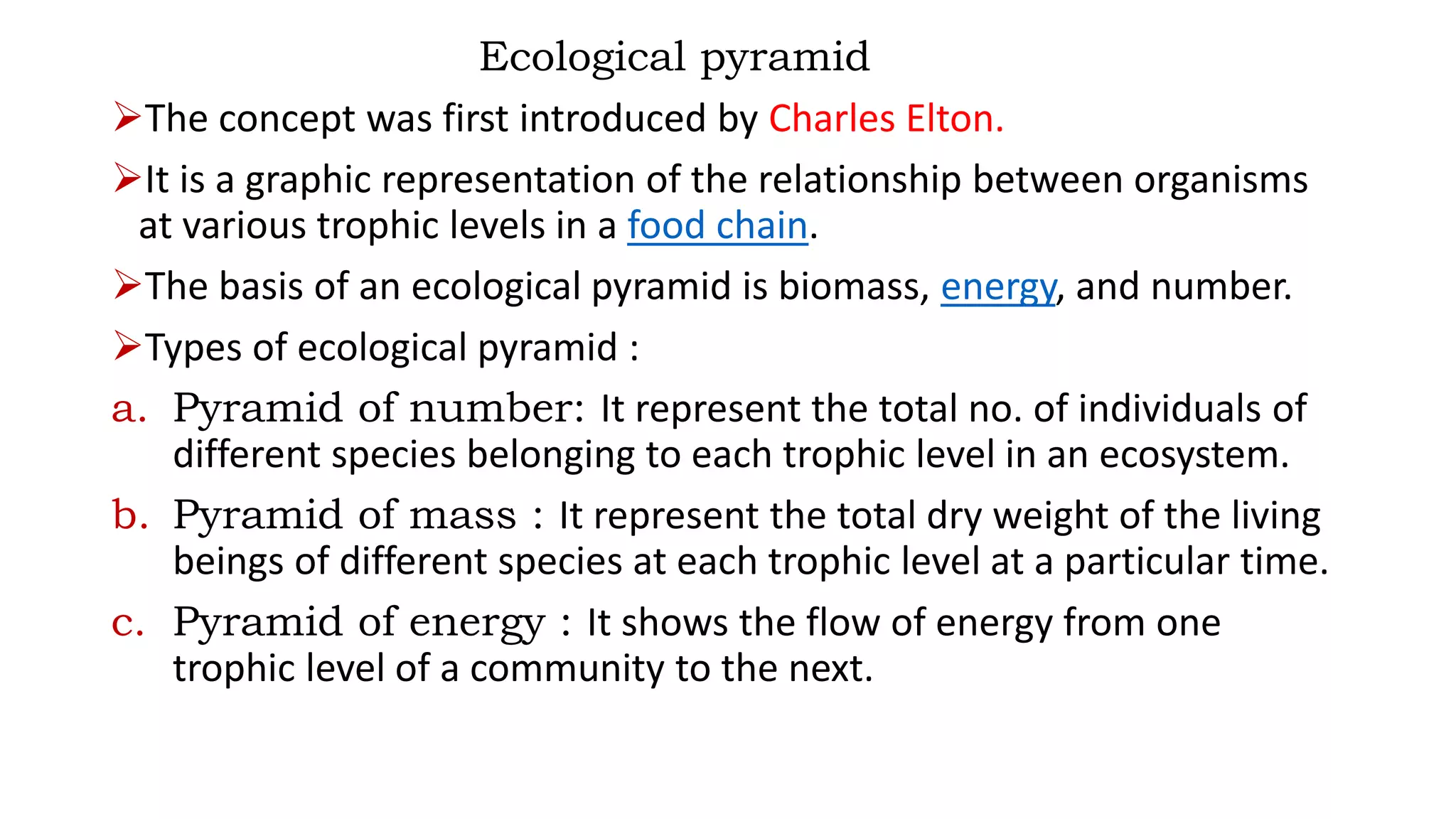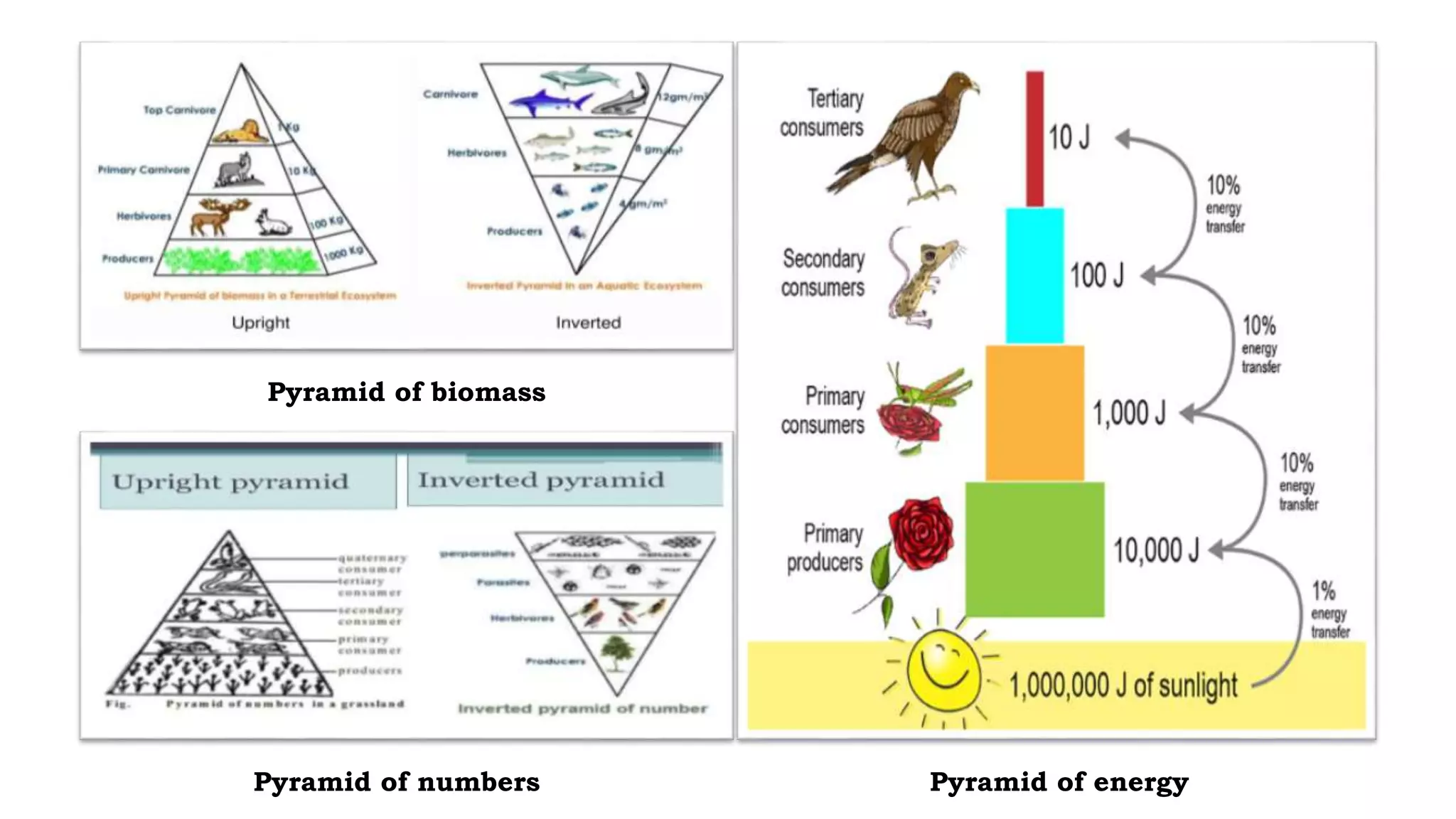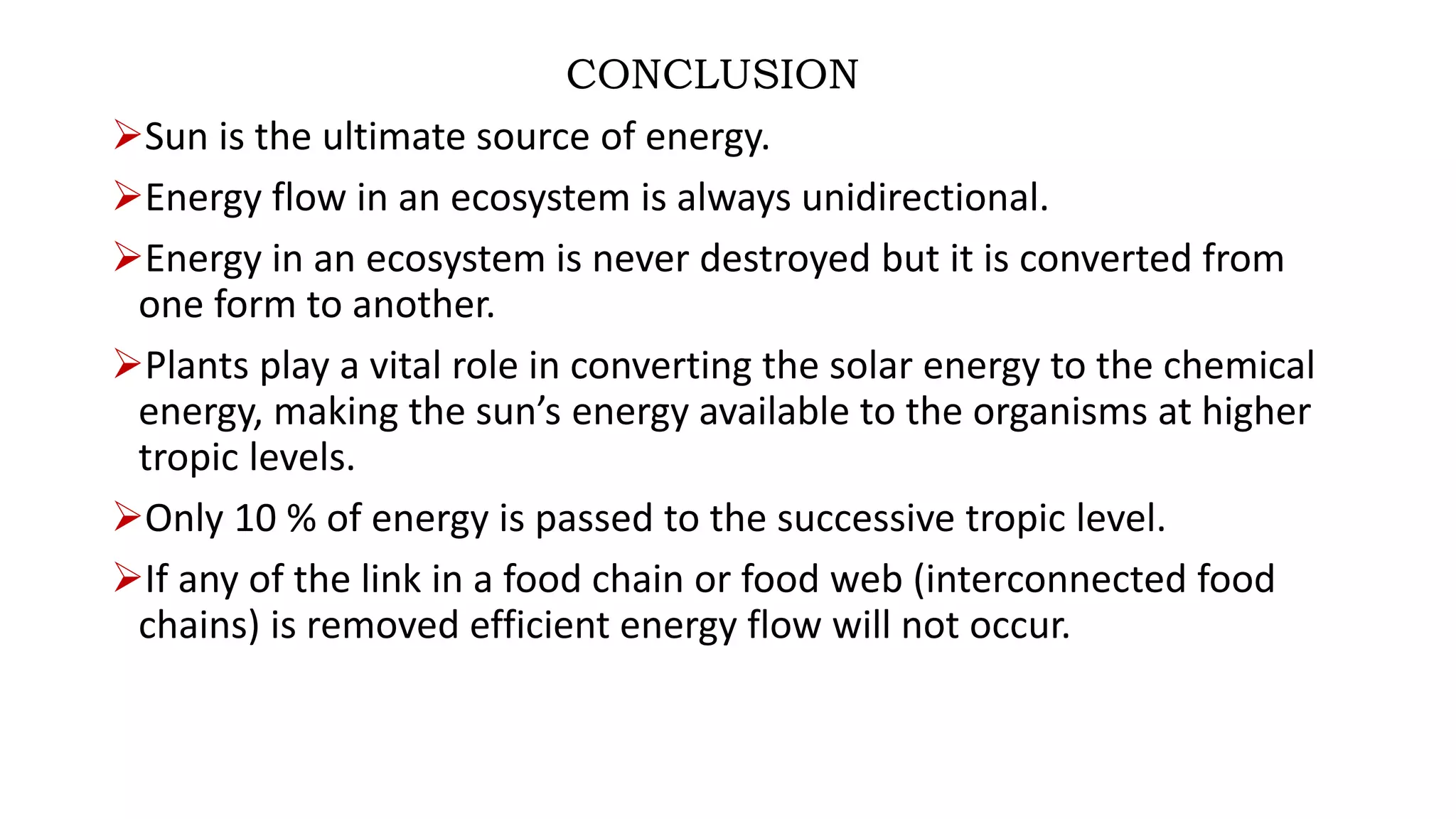The document discusses energy flow through ecosystems. It begins by explaining that the sun is the primary energy source for ecosystems and that plants convert the sun's radiant energy into chemical energy through photosynthesis. This chemical energy then passes through food chains, with approximately 10% of the energy being transferred to each higher trophic level. Various models and laws are described that illustrate principles like the one-way flow of energy and the inefficiencies of transfers between trophic levels. Overall, the summary emphasizes that sunlight powers ecosystems by being converted to chemical energy by plants and then traveling through food webs in a step-wise, 10%-losing manner.
